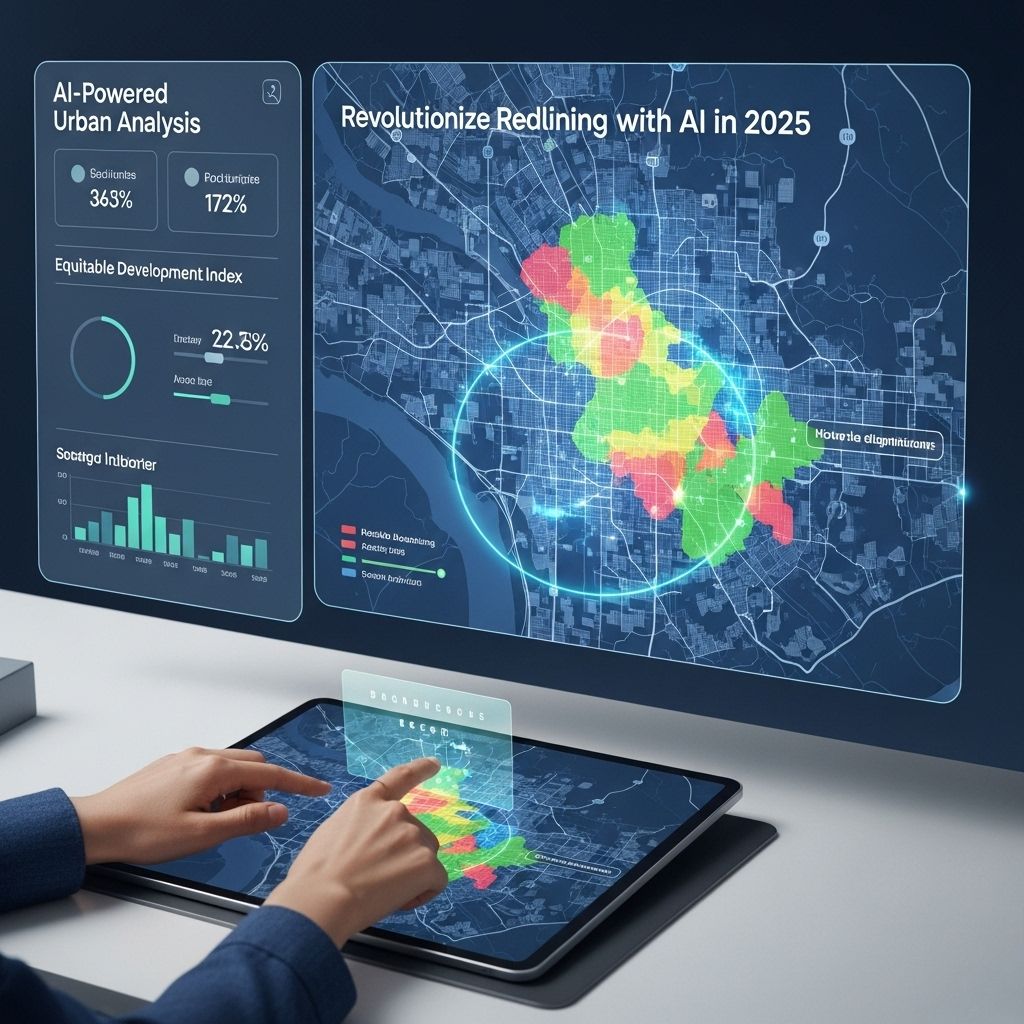Revolutionizing Redlining: How AI Will Transform Housing by 2025
Explore how AI technology will reshape redlining practices and improve housing equity by 2025. Discover the future of fair housing.

As we step into 2025, the intersection of technology and social justice has never been more pronounced, particularly in addressing historical injustices such as redlining. Redlining, the discriminatory practice that denied various communities access to loans, mortgages, and insurance based on racial or ethnic composition, has left lasting scars on American society. However, with the advent of artificial intelligence (AI), there is a significant opportunity to not only understand these injustices but also actively work to mitigate their effects. This article delves into how AI can revolutionize the conversation and actions surrounding redlining.
Table of Contents
The Historical Context of Redlining
Before exploring the potential of AI in combating redlining, it’s essential to understand its historical context. Redlining was first institutionalized in the 1930s and has had profound implications for wealth accumulation, property values, and community development.
Key Historical Events
- 1930s: The Home Owners’ Loan Corporation (HOLC) created maps that assessed neighborhoods for investment risk, marking predominantly Black neighborhoods in red.
- 1968: The Fair Housing Act was enacted, outlawing discrimination in housing.
- 2008: The housing crisis revealed the extent of predatory lending practices, disproportionately affecting minority communities.
Understanding Redlining through Data
AI excels at data analysis, which is crucial in understanding the long-term effects of redlining. By analyzing historical housing data, AI can uncover patterns and correlations that illustrate how redlining has shaped community dynamics.
Data Sources for Analysis
Key datasets that can be used in AI models include:
- Historical redlining maps
- Demographic information from the U.S. Census Bureau
- Home value trends over the decades
- Loan access data from the Home Mortgage Disclosure Act (HMDA)
AI Techniques for Addressing Redlining Issues
Several AI techniques can be applied to address redlining’s legacy:
1. Predictive Modeling
Using predictive analytics, AI can identify neighborhoods at risk of continued disinvestment or gentrification by analyzing current trends in demographics, housing prices, and economic opportunities.
2. Natural Language Processing (NLP)
NLP can analyze public sentiment through social media and news articles, providing insights into how communities are discussing the issues related to redlining and potential solutions.
3. Geographic Information Systems (GIS)
GIS technology can visualize data spatially, helping stakeholders see the impact of redlining in a tangible way. By layering data such as income levels, education, and health outcomes, communities can better understand the inequities they face.
Case Studies of AI Implementation
Real-world examples of AI applications in combating redlining help illustrate its potential impact.
Case Study 1: Predictive Housing Initiatives
In 2022, a nonprofit organization in Atlanta used predictive models to identify neighborhoods that had been historically redlined. Their AI-driven approach was able to highlight areas where investment could foster economic growth without displacing current residents.
Case Study 2: Community Engagement Platforms
A project in Chicago utilized NLP to analyze social media posts from community members discussing housing issues. The insights gathered were used to inform local housing policies and advocacy efforts.
Challenges and Ethical Considerations
While the potential for AI to change the narrative around redlining is promising, several challenges and ethical considerations must be addressed:
- Data Bias: AI is only as good as the data it analyzes. Historical biases in data can lead to further discrimination if not carefully managed.
- Transparency: Stakeholders must ensure that AI models are transparent and understandable to the communities they impact.
- Community Involvement: Engaging communities in the development of AI tools ensures that the solutions are relevant and beneficial.
Conclusion: A Path Forward
The potential for AI to revolutionize the conversation around redlining is immense. By leveraging technology, we can not only analyze the historical impacts of redlining but also create tools for advocacy, policy change, and community empowerment. As we move forward, the collaboration between technologists, community members, and policymakers will be essential in creating equitable solutions that honor the history while forging a new path towards justice.
Key Takeaways
- AI can provide insights into the historical effects of redlining.
- Predictive modeling and NLP can guide community initiatives and policy changes.
- Addressing challenges such as data bias and ensuring community involvement is crucial for ethical AI deployment.
FAQ
What is redlining and how does it affect communities?
Redlining is the discriminatory practice of denying services, typically financial, to residents of certain areas based on their racial or ethnic composition. This has long-lasting effects on community development, access to resources, and economic opportunities.
How can AI help in addressing the issues of redlining?
AI can analyze historical data and patterns of discrimination to identify areas impacted by redlining. It can also help in creating equitable policies by providing insights on resource allocation and community needs.
What are some potential applications of AI in urban planning to combat redlining?
AI can optimize urban planning by simulating the impact of policies, assessing community needs, and predicting outcomes of development projects, ensuring that resources are distributed fairly.
What role will policymakers play in the integration of AI in combating redlining?
Policymakers will need to collaborate with technologists to create regulations that ensure AI tools are used ethically and effectively, focusing on transparency and accountability in decision-making processes.
What are the risks of using AI in addressing redlining?
Risks include potential bias in AI algorithms if not carefully monitored, which could perpetuate existing inequalities rather than resolve them. Continuous oversight and community involvement are crucial.
How can communities get involved in the fight against redlining using AI?
Communities can engage by advocating for transparency in data used for AI models, participating in discussions about urban planning, and collaborating with tech developers to ensure their needs are met.
